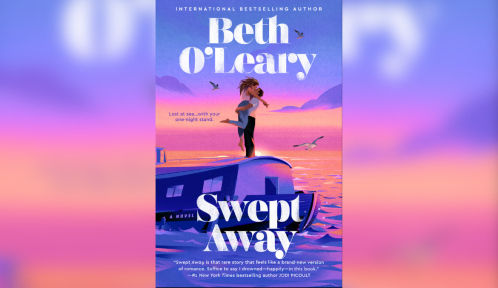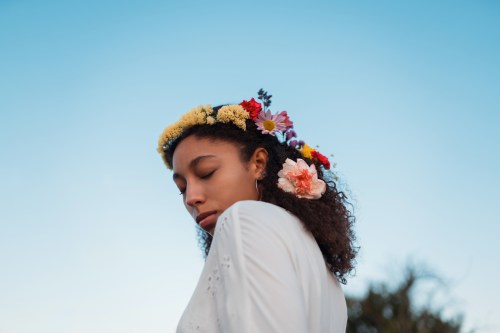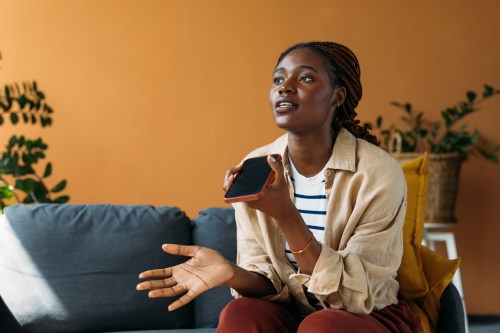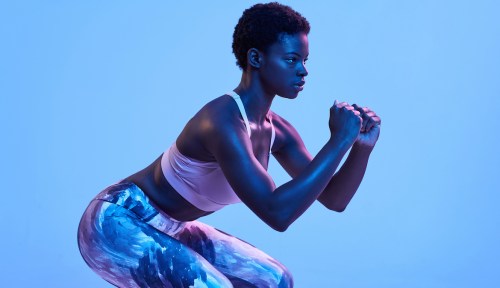I’ve been feeding the void the past few months. Though I’m aware that reads as equal parts scary and sexual, it really just means I’ve using retail therapy to get me through a rough time. And while I’m a big advocate of the “treat yo’self” way of living, I recently caught myself veering into dangerously extra territory. When I caught myself thinking, You know what this bedroom needs? A Victorian fainting couch, I knew it was time to come up with a new emotional detachment strategy for self-soothing. Because void feeding ain’t cheap.
Enter: A study recently published in the Society for Consumer Psychology that takes a cue from 2015’s Inside Out. The Pixar film examines how the psychological process of emotional detachment can ease your sadness…and help you make better choices. To that point, the study concluded that when you anthropomorphize your sadness, regarding it as an entity rather than just as an emotion, you’re less likely to make impulsive, void-feeding decisions.
To test this, the researchers had one group of study participants write about sad experiences and instructed another group to anthropomorphize their sadness by writing about it as if it were a person. Both groups were then asked to select a side dish—salad or cheesecake—to accompany their lunch, and participants who anthropomorphized their sadness were more likely to end up on team salad. Of course, there’s no harm in enjoying cheesecake, but the results do make the case that by selecting the objectively healthier choice, the anthropomorphizing group was able to make a decision requiring more self-control.
Based on all of this, I wondered whether turning my sadness into Sadness might help me tone down my new, feisty spending habit. So I decided to test the theory; I envisioned Sadness as a disheveled lady with a blunt, black bob cut; red lipstick; clove cigarettes; running eyeliner; and a leather jacket.
Below, find out what happened when I let Sadness factor into my decision-making process:
Sadness ate some post-gym dinner
I’ve been trying to commit to a three-times-a-week gym routine and a one-time-a-week pizza routine. Ideally, the two don’t overlap, but before one workout, my roommate/gym-buddy/pizza pal texted me, “Should today be our pizza day?”
Of course I wanted pizza. I always want pizza. But I could imagine Sadness eating a fast-melting slice, grabbing garlic knots with her sharpened black talons, the grease piling on her skin. I want the pizza, but Sadness is the one craving it. Being able to identify how I actually feel empowered my dinner choice. Had I gone for the pizza, it would have been because I wanted to, not because Sadness did. And the meal would have been totally happy as a result.
(FWIW, I ended up having a vegetable-forward dinner instead—and I felt really great about that, too.)
Sadness got her hair done
I very rarely get my hair done, but I was speaking at an event and am not adept at blowing out my own ‘do. Sadly, a blowout in New York City costs a small fortune, so I had to decide whether or not I wanted to splurge. I visualized Sadness getting a trim for her baby bangs, fanning herself with an array of $100 bills she planned to fork over to her stylist. So, that was Sadness’ take—what was mine?
“You don’t need a $50-with-tip blowout,” I said definitively, ultimately compromising for a $25 dry-style. Because, hey, I’m not one to speak publicly while disheveled—sad or not.
Sadness bought black turtlenecks for fall
At a particularly low point, I sought to stock up on the autumn basic. While it may seem wasteful to buy identical pieces of clothing, it’s an unflappable truth that black turtlenecks are practical, cool, and timeless. Sadness wouldn’t convince me to not throw down in this case.
But while waiting in the checkout line at H&M, I paused at a bin of velvet scrunchies because I was sure a velvet scrunchie would really pull this look together. Or, wait—was that just Sadness talking? I imagined her sniffling and pocketing a velvet scrunchie into her leather jacket before fading away and out of the store.
So I purchased the two black turtlenecks and passed on the velvet scrunchie.
Sadness decided between money and materials
I live in a thrifting continuum wherein I always buy gently used clothes and try to sell last year’s threads. Usually, the consignment-store employees hate the clothes I bring in (like really, they hate my clothes), but on this day, I had a big win: $38 in store credit or $24 cash.
I gasped right then and there, inclined to take store credit with no extra thought because it would easily buy me a dress and a half. But did I need the dress? Am I void-filling? Wouldn’t it be more practical to just have the money in hand for more pressing expenses (like, oh, dinner)? I turned to Sadness. She sat there in a pile of clothes wearing a long black sequined gown, puffing away on her cigarette, taking so many selfies, and seeking so much validation. I got to the counter.
“Yeah, I’ll cash out, if that’s okay.”
Ultimately, the experiment worked in that it forced me to check in with my decisions and ensured I felt empowered and in control of every choice: Did I want things because I truly need them or because Sadness wants them? Regardless of how I chose to proceed, I felt confident that my choice was actually my choice, which totally changed my headspace. I can buy something or eat something or watch something or do something or not do something because I want—and sometimes that desire will coincide with what Sadness also wants. And that reality doesn’t tinge all my desires with a loathing feeling; I can buy an outfit or eat a bagel or binge-watch TV because I really, truly want to. And there’s power in knowing that.
Ultimately I learned that emotional detachment by way of anthropomorphizing my sadness can serve as a great reminder that I’m, in fact, not my sadness—even if Sadness is sometimes a part of me.
This is how crying to sad music can actually give you a mood boost. And you can use the feelings wheel to help you tackle the complexity of youremotions.
Sign Up for Our Daily Newsletter
Get all the latest in wellness, trends, food, fitness, beauty, and more delivered right to your inbox.
Got it, you've been added to our email list.

















